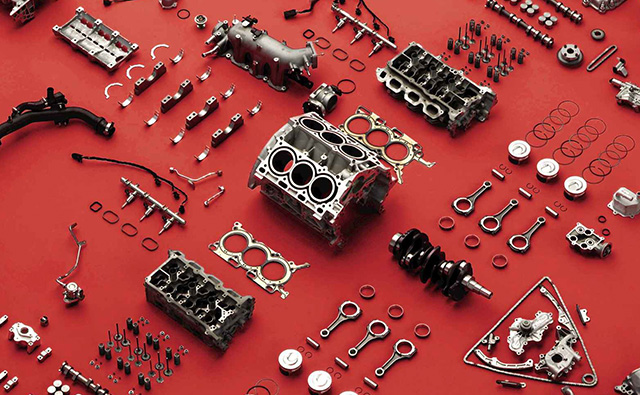The Quest for Ultimate Driving Power: Checking Out the Pinnacle of Engine Efficiency and Technological Breakthroughs in the Automotive Market
In the realm of automobile engineering, the pursuit of maximum driving power has been a ruthless mission that has unravelled via the advancement of engine layout and the assimilation of cutting-edge technologies. From the careful workmanship of burning engines to the fast innovations in electrical propulsion systems, the automotive industry stands at the cusp of a new era characterized by extraordinary efficiency capacities.
Evolution of Engine Layout
:max_bytes(150000):strip_icc()/125176351-57ab52f35f9b58974a077a94.jpg)
In addition, the integration of turbocharging and turbo charging modern technologies has changed engine design by increasing power without dramatically raising engine dimension. These forced induction systems press the consumption air, enabling more fuel to be combusted, thereby producing better power output from a smaller engine. This innovation has actually been especially critical in improving the efficiency of smaller sized variation engines while keeping gas performance standards.

Performance-Enhancing Fuel Technologies
The application of innovative fuel innovations has actually substantially added to enhancing engine performance in contemporary lorries. From traditional gas and diesel to cutting-edge biofuels, artificial fuels, and hydrogen, the auto sector is witnessing a transformation in fuel choices. Biofuels, stemmed from renewable resources like corn, algae, or sugarcane, deal boosted and minimized discharges engine efficiency. Synthetic gas, produced via chemical procedures, offer high octane ratings, improving power output. Hydrogen gas cells, although still in the onset of fostering, show terrific guarantee due to their zero-emission nature and possibility for high performance. In addition, fuel ingredients and cleaning agents are being created to clean engine parts, optimize burning, and decrease rubbing, therefore increasing overall car performance. With ongoing r & d, the mission for the supreme driving power continues, as engineers strive to open the full potential of performance-enhancing fuel modern technologies in the automobile sector.
Developments in Electric Propulsion
Considerable strides in electrical propulsion modern technology have actually transformed the automotive market, leading the method for a brand-new period of lasting and reliable transport. Electric vehicles (EVs) are gaining popularity due to their environmental benefits and improvements in battery modern technology, making it possible for longer driving arrays and much shorter billing times. Makers are spending heavily in r & d to enhance the efficiency of electric propulsion systems, concentrating on enhancing power result, improving power performance, and decreasing general weight.
One noteworthy breakthrough in electric propulsion is the development of innovative electrical motors that provide higher torque and power density, leading to improved acceleration and overall driving efficiency. Additionally, regenerative braking systems have actually been refined to keep and catch energy throughout slowdown, further boosting the efficiency of EVs.
Additionally, the assimilation of wise innovations, such as artificial intelligence and predictive analytics, is optimizing the administration of electric propulsion systems, making certain optimum performance under numerous driving conditions. These improvements in electrical propulsion are reshaping the automobile landscape, driving the market in the direction of a more sustainable and energized future.
Influence of Computational Liquid Characteristics
With advancements in electric propulsion pushing the borders of auto innovation, the assimilation of Computational Fluid Dynamics is playing an essential duty in optimizing aerodynamic performance and enhancing total effectiveness in click over here now vehicle style. Computational Fluid Characteristics (CFD) involves the usage of computer simulations to analyze the flow of air around a lorry, enabling engineers to anticipate how style modifications will certainly impact aerodynamics without the demand for costly physical prototypes. By properly modeling air movement patterns, CFD permits for the improvement of automobile shapes to minimize drag, improve air conditioning, and improve security.
CFD enables engineers to optimize airflow around parts such as radiators, engine bays, and wheel wells, contributing to boosted performance and overall driving experience. In final thought, the assimilation of Computational Liquid Dynamics stands for a substantial step forward in the mission for supreme driving power and efficiency in the vehicle market.
Future Fads in Engine Development
In the dynamic landscape of vehicle design, innovative improvements are forming the future trajectory of engine development. The future of engine layout is marked by a solid emphasis on efficiency, sustainability, and performance. Suppliers are increasingly concentrating on establishing engines that not just supply high power outputs however also focus on ecological responsibility by enhancing and decreasing discharges gas effectiveness.
One prominent pattern in engine development is the rise of electrification. Crossbreed and electrical powertrains are obtaining grip as viable alternatives to traditional burning engines. These modern technologies offer the capacity for considerable decreases in carbon emissions and increased power efficiency, aligning with global efforts to combat climate change.
Additionally, advancements in products scientific research and manufacturing strategies are enabling Learn More the manufacturing of lighter and a lot more resilient engine parts. This shift towards lightweight products such as carbon fiber and aluminum alloys adds to improved performance and gas economic situation.
Final Thought
Finally, the quest of ultimate driving power in the automobile market continues to drive advancements in engine design, fuel modern technologies, electric propulsion, and computational liquid dynamics. The advancement of these technologies is forming the future of engine development, leading the way for more effective and reliable lorries (engines for africa). As the sector proceeds to push the borders of what is feasible, we can expect to see a lot more revolutionary growths in the mission for peak efficiency
One of the essential turning points linked here in engine design development is the shift from conventional carbureted engines to modern-day fuel-injected systems. By exactly metering the fuel shipment to each cylinder, fuel-injected engines optimize burning, resulting in much better performance and minimized environmental impact.
In addition, the assimilation of turbocharging and supercharging innovations has actually revolutionized engine layout by enhancing power without significantly enhancing engine dimension (engines for africa).The application of advanced fuel technologies has significantly added to boosting engine efficiency in modern cars. Additionally, fuel ingredients and detergents are being developed to tidy engine elements, optimize combustion, and minimize rubbing, thereby enhancing total automobile performance